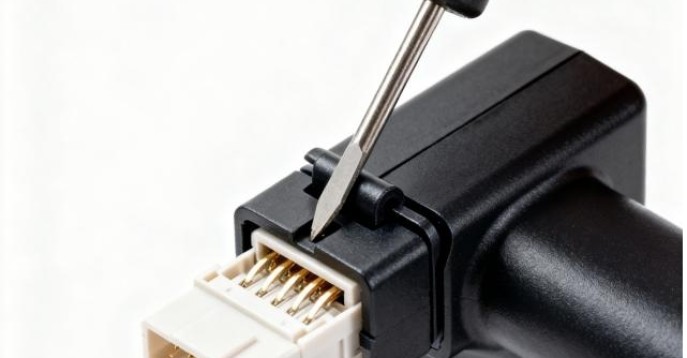What is an FFC/FPC connector?
FFC connectors are used to mate ribbon flat flex cables (FFC) to PCB circuits in wire-to-board applications. They are also available in cable-to-cable configurations. These connectors feature a high density, very narrow form factor to fit in tight spaces. They are commonly used in consumer applications such as notebook computers, cameras, computer peripherals, appliances and telephones. Single-row or dual-row connector housings are typically made of flexible plastic, polymer, engineered rubber, or film that surrounds the embedded metal connector. Various locking styles are available.
FPC connectors connect flexible printed cables (FPCs) to circuit boards. FPC is a type of FFC in which the conductors are printed on the cable substrate rather than embedded in it. FPC/FFC connectors are sometimes called ribbon connectors.
A key reason designers choose FFC/FPC connectors is their increased flexibility when used with flex cables compared to traditional rigid circuit boards.
ELCO was an early developer of FFC type connectors and merged with AVX in the early 1990s, KYOCERA AVX took responsibility for ELCO products and continued to develop its FFC/FPC series.
Although FFC was widely used in the 1970s, cables were originally only available in direct solder or crimp contact versions. In 1986, ELCO invented the 8370 series, the first cost-effective card edge type connector that mates directly on the FFC.
Unique contact actuator design features retaining tabs to prevent accidental actuator separation. A retaining tab surrounds the actuator shaft and hooks onto the cavity, preventing the actuator from opening.
Design description
FFC/FPC connectors are available in pin, socket, card edge and solder lug contact options with single or double row housings.
Some variants are capable of mixing FFC cable and round wire contacts with various pitches such as 0.03 mm, 0.5 mm, 1.00 mm, 1.25 mm, 2.54 mm, but the most common pitches are 0.500 mm, 1.00 mm and 1.25 mm. A single FFC can have different spacing between different conductors on the same cable, but this is not common.
FFC/FPC connectors are available in fully shielded versions to control EMC interference.
Various locking mechanisms secure this connector type, including latches, pegs, and retaining tabs.
Board termination options include surface mount or through hole.
0.5 mm pitch shielded FFC/FPC connectors feature one-hand automatic locking, high temperature resistance (125 °C), high-speed performance, and vertical or horizontal mating.
Markets, Sectors and Applications
Automotive, Consumer, Datacom/Telecom, Test & Measurement, Medical, Industrial
FFC/FFP connectors serve numerous markets and applications, including consumer equipment, industrial controls, displays, printers, automotive, test and measurement instruments, appliances and medical equipment.
FFC/FPC one-touch connectors feature one-step mating, automatic pinning mechanism and high retention force for reliable connection and easy handling. These connectors provide a visible release button for easy FFC/FPC cable release operation and a locking pin system that ensures FFC/FPC cable connection with high retention force.














